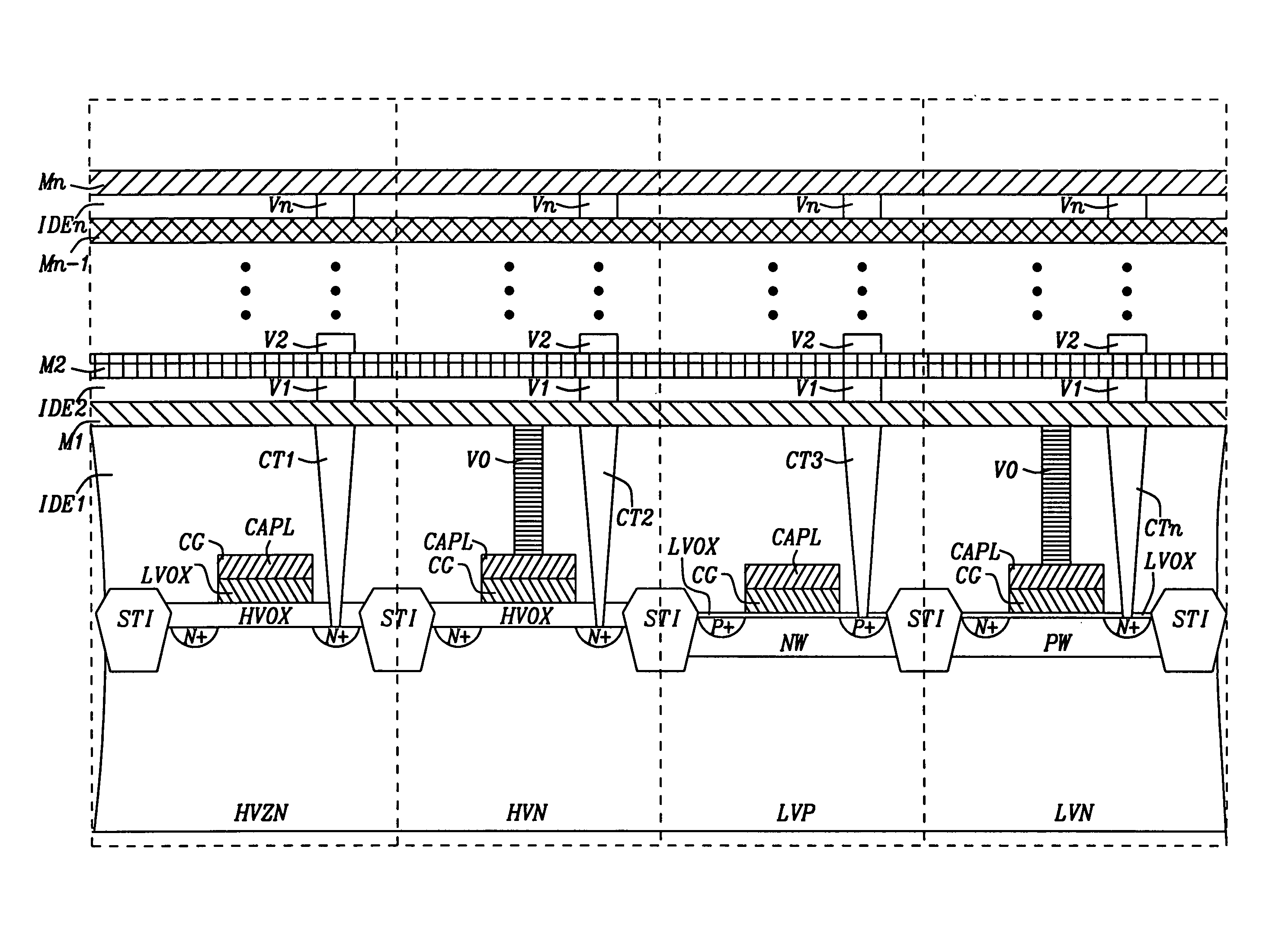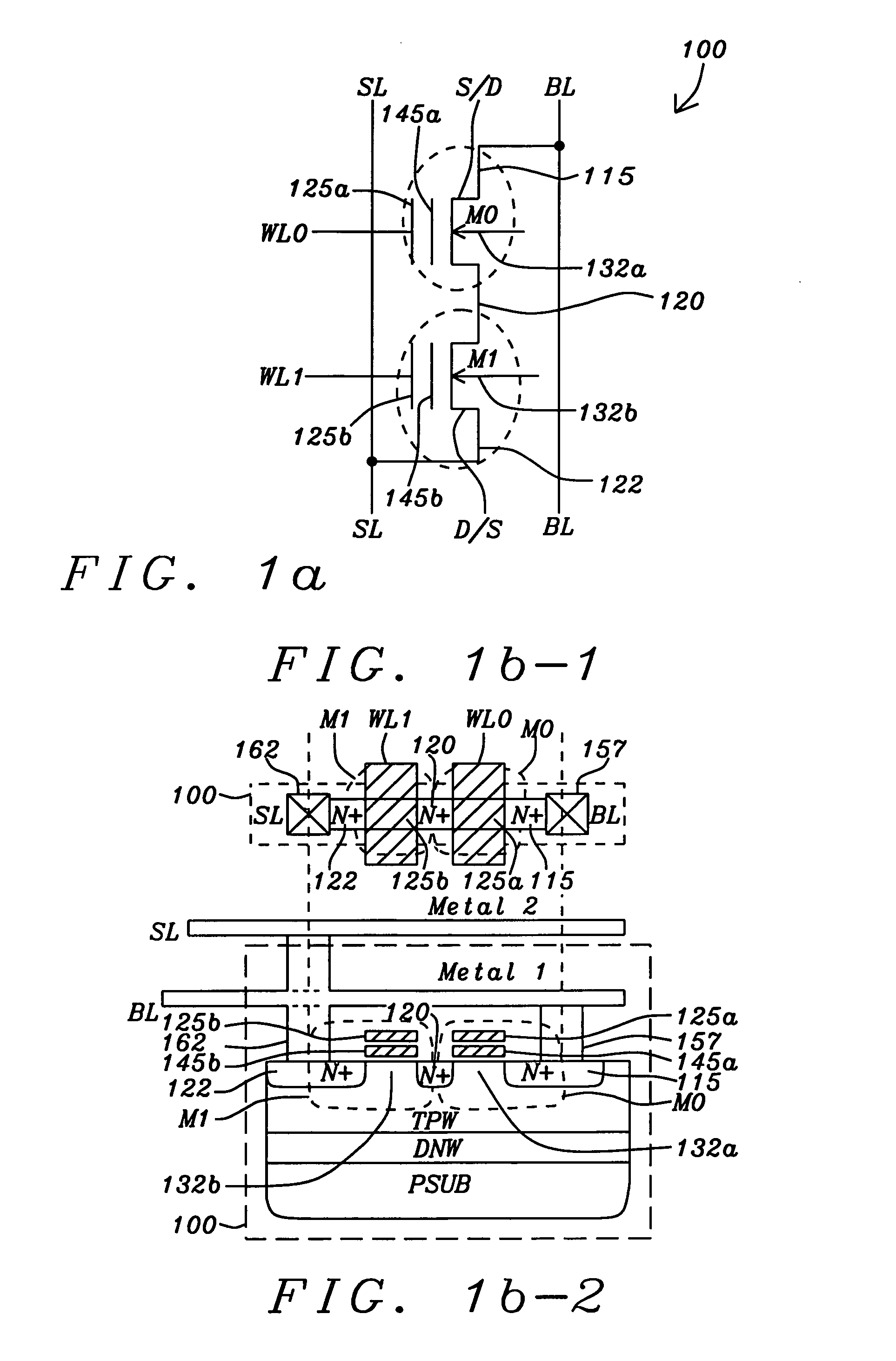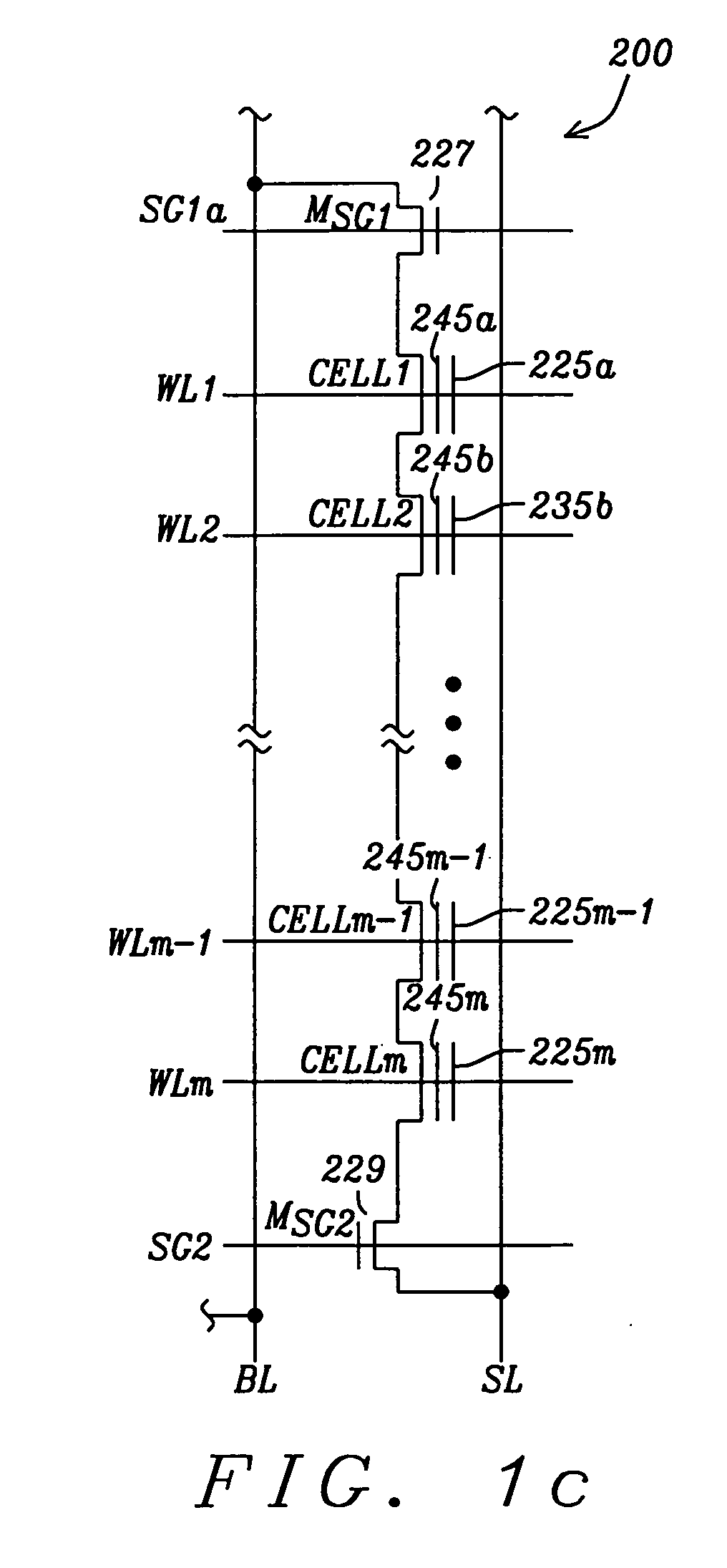Embedded NOR flash memory process with NAND cell and true logic compatible low voltage device
a technology of embedded flash memory and nand cell, which is applied in the direction of semiconductor devices, semiconductor/solid-state device details, electrical devices, etc., can solve the problems of low application compatibility, low application compatibility, and low read speed of nand flash memory, so as to limit the extent of depletion regions
- Summary
- Abstract
- Description
- Claims
- Application Information
AI Technical Summary
Benefits of technology
Problems solved by technology
Method used
Image
Examples
Embodiment Construction
[0038]The punch-through phenomenon of the charge retaining transistors of the NOR flash memory cell has forced the charge retaining transistors to be fabricated with a sufficiently large channel length to prevent the punch-through. While the NAND flash memory cell is structured to have a serial NAND string with a gating transistor that overcomes the scaling problem, the NAND flash memory cell has a relatively slow read speed. The size of the NOR flash memory cell and the slow read speed of the NAND flash memory cell make them actually unsuitable embedded flash memory technology for System-on-Chip (SoC) designs. The power consumption of the NOR flash memory cells of the prior art does not meet the requirements of “Green Memory”. The slow read speed of the NAND cell can not meet the performance requirements for SoC designs.
[0039]The 771 patent application describes a NAND-based NOR flash memory cell. The NAND-based NOR memory cell is designed and marketed by APlus Flash Technology, In...
PUM
 Login to View More
Login to View More Abstract
Description
Claims
Application Information
 Login to View More
Login to View More - R&D
- Intellectual Property
- Life Sciences
- Materials
- Tech Scout
- Unparalleled Data Quality
- Higher Quality Content
- 60% Fewer Hallucinations
Browse by: Latest US Patents, China's latest patents, Technical Efficacy Thesaurus, Application Domain, Technology Topic, Popular Technical Reports.
© 2025 PatSnap. All rights reserved.Legal|Privacy policy|Modern Slavery Act Transparency Statement|Sitemap|About US| Contact US: help@patsnap.com



